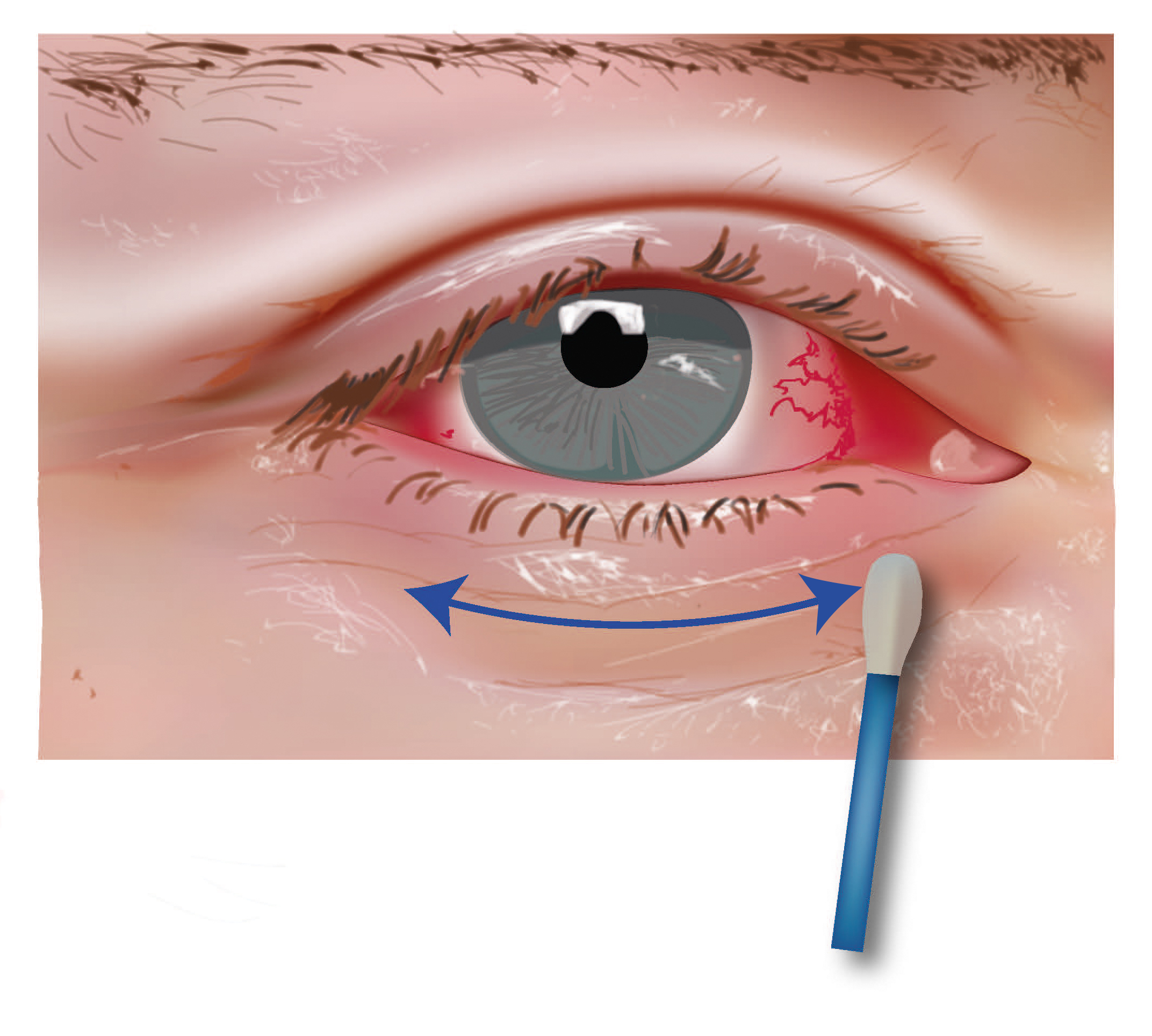Blepharitis
Information for patients from Ophthalmology
What is Blepharitis?
Blepharitis is the medical term for an inflammatory skin condition of the eyelid margins (the edge of the eye lid, where the eyelashes grow) and the roots of the eyelashes. It usually affects both eyes.
What causes Blepharitis?
Within the eyelids there are many glands which produce substances to help keep the surface of the eye healthy. These substances sometimes build up around the eyelashes and along the eyelid edge forming crusts.
What are the symptoms?
If you have Blepharitis you may experience one or all of the following symptoms.
Persistent irritation or ‘burning’ sensation
Itchiness around your eye
A feeling of ‘grit’ in your eye
Scales on your eyelashes
Redness and swelling of your eyelid margins
Crusting of your eyelids (especially in the mornings)
Redness of your eye
Eyelid cysts / styes.
How long will it last?
This condition can go on for years with occasional flare-ups where signs and symptoms increase in severity. It is possible to control Blepharitis, often with quite simple treatments.
Is it serious?
No, although Blepharitis can be uncomfortable, it rarely causes problems to the eye itself.
Is it an infection?
No, but there may be over activity of normal skin organisms. These germs (bacteria and occasional fungi) flourish in debris / secretions that build up on the edge of the eyelids. If you are about to have surgery your risk of infection increases. This is why regular cleaning of your eyelids is important.
What is the treatment?
A combination of many forms of treatment are used (your doctor or nurse will advise you which method to follow).
Method 1: Hot compresses
Soak a clean face cloth in hot water, as hot as your eyelids can take. Lay it over your closed eyelids for five to 10 minutes. It may be necessary to re-heat the cloth repeatedly. This should not only feel good but will make the scales on your eyelashes easier to remove.

Method 2: Baby shampoo
Dilute four drops of baby shampoo to a quarter cup of warm water (preferably water that has been cooled down after boiling). Dip a cotton bud into the solution of diluted shampoo and paint along your eyelid edges. Clean your eyelids, eyelid edges, and eyelashes with a side to side motion (see image).
Method 3: Bicarbonate of Soda
Dissolve one level teaspoon of bicarbonate of soda in one pint of boiling water then allow the solution to cool. Dip a cotton bud into the solution and paint along your eyelid edges. Clean your eyelids, eyelid edges, and eyelashes with a side to side motion (see image above).
How often should I do this?
We advise you to use one of these methods at least twice a day for two weeks, then once daily until your eyes feel more comfortable.
Sometimes this treatment has to be continued indefinitely. If you have been given this advice before a surgical procedure then you should continue the treatment twice a day until your operation.
Will I need medication?
You may have been prescribed an anti-inflammatory ointment. This will need to be applied to your eyelid edges with a clean finger after cleaning. At bedtime, a quarter of an inch of the ointment should be placed inside your lower eyelid. The ointment will only work if the crusts are removed first.
When should my eye start feeling better?
Having followed the steps outlined in this leaflet you may expect the redness and irritation to be improved within two to eight weeks of starting treatment. Once comfortable, the regular cleaning may be reduced to every other day or even once a week.
Blepharitis usually responds well to treatment although long term cleaning of your eyelids will need to be continued. Always be prepared to step up treatment quickly if your symptoms get worse.
Further information
If you have any queries, please speak to your doctor or consultant.